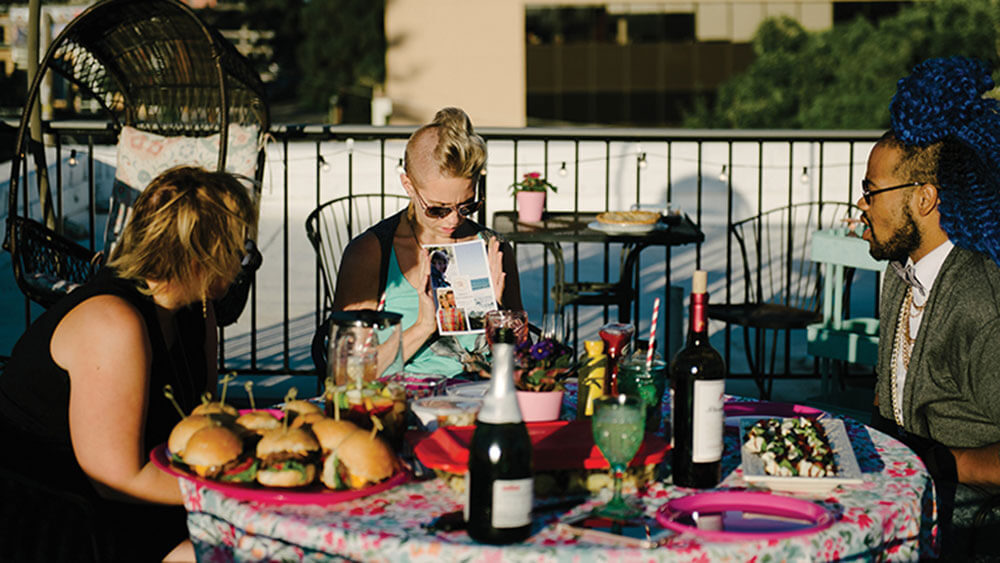
The Dinner Party events bring together grieving adults to break bread and share their common experiences.
The ”relational dining” trend in VML Intelligence’s “The Future 100: 2024” report resonated with me. VML calls it an “emerging wave of dining concepts created to encourage community connection.” The New York Times take? It’s “the radical act of eating with strangers.”
Event organizers expect their attendees to engage in that radical act as part of their on-site experience, but speaking as an introvert myself, sometimes it’s a lot to ask. There are times as an attendee that I’ve just ordered room service at night, opting for Dinner With Myself after a full day of Engaging With Others.
One community dining concept shared in this report suggests a way for planners to help participants have more intentional dining experiences that are more appealing than retreating to their hotel rooms at night or facing the prospect of an awkward meal. Dinner With Friends is an intimate dinner party for eight people — strangers — who come together over a home-cooked meal. Since launching Dinner With Friends three years ago after she moved to New York City and struggled to find friends, Anita Michaud has had more than 800 people sign up to host or take part in a casual community meal.
Dinner With Friends could be applied to events by having sign-ups for groups of eight to gather around a table together for an onsite meal, or, similar to a dine-around, to go out to eat at a local restaurant. The idea here is that it levels the playing field — this isn’t for people who are reuniting with their tribe at an event. It’s for those who don’t really know others attending and don’t want to be stuck at a table where everyone else is already acquainted and engaged in conversation. That experience feels like an adult version of the new kid in the lunchroom on their first day at school.
This idea could be fleshed out even more, by loosely organizing signups around a personal or professional interest. A somewhat extreme example of this is the Dinner Party, which wasn’t included in the trends report, but is an initiative Convene wrote about six years ago. This is a community of 21- to 45-year-olds who have each experienced the loss of someone close to them and just want to break bread with others who understand what they are going through.
Central to the relational dining movement is a heightened need for community. The report cites a statistic from Wharton professor and Social Chemistry: Decoding the Elements of Human Connection author Marissa King’s research. She found that our social networks decreased in size by an average of 16 percent during the pandemic. (Convene Deputy Editor Barbara Palmer interviewed King three years ago about her book and how it directly connects to the business events industry.)
It’s part of every culture to connect around food, which is why we find the senior vice president of R&D for PepsiCo Foods, Denise Lefebvre, weighing in on the issue in the report: “If you look at what our lives were like for a couple of years, we didn’t share because sharing was considered dangerous,” she told The New York Times. “Now the sense of community has never been stronger.”
Gathering, creating, and nurturing communities is the work of events and key to why there has been such a strong return to face-to-face events. It’s not just about getting back to business. It’s about getting back to the business of being human.
It may not seem like a related trend, but I see VML’s “Impactainment” as a follow-on to this idea of community-building, or perhaps it takes it to the next level. Impactainment, according to the report, “is strongly rooted in behavioral science and psychology and involves creating impactful experiences that inspire mass action and change. It differs from edutainment in that it isn’t just about educating participants, but also about galvanizing them to make a difference.”
VML illustrated this idea with a real-life example — which also happens to be centered on a meal. Hidden Worlds Entertainment, which describes itself as an impactainment company creating attractions with a purpose, partnered with The Bahamas Ministry of Tourism to create an “immersive ocean-positive dining experience” for participants. The event was a mashup of art exhibitions, multisensory dining, and 360-degree photography that highlighted the conservational successes of the islands as well as showcasing the beauty and plight of the oceans. At the end of the event, guests were invited to sign up for a beach clean-up.
Daniel Hettwer, Hidden Worlds Entertainment founder, has an ambitious mission with an obvious crossover to the business events industry — “to build the most fun, high-quality guest experiences and leisure, entertainment, and hospitality sectors to promote hope, belief, and innovation.” Accomplished, I would add, by cultivating a community that joins together to take positive action.
Michelle Russell is editor in chief of Convene.
